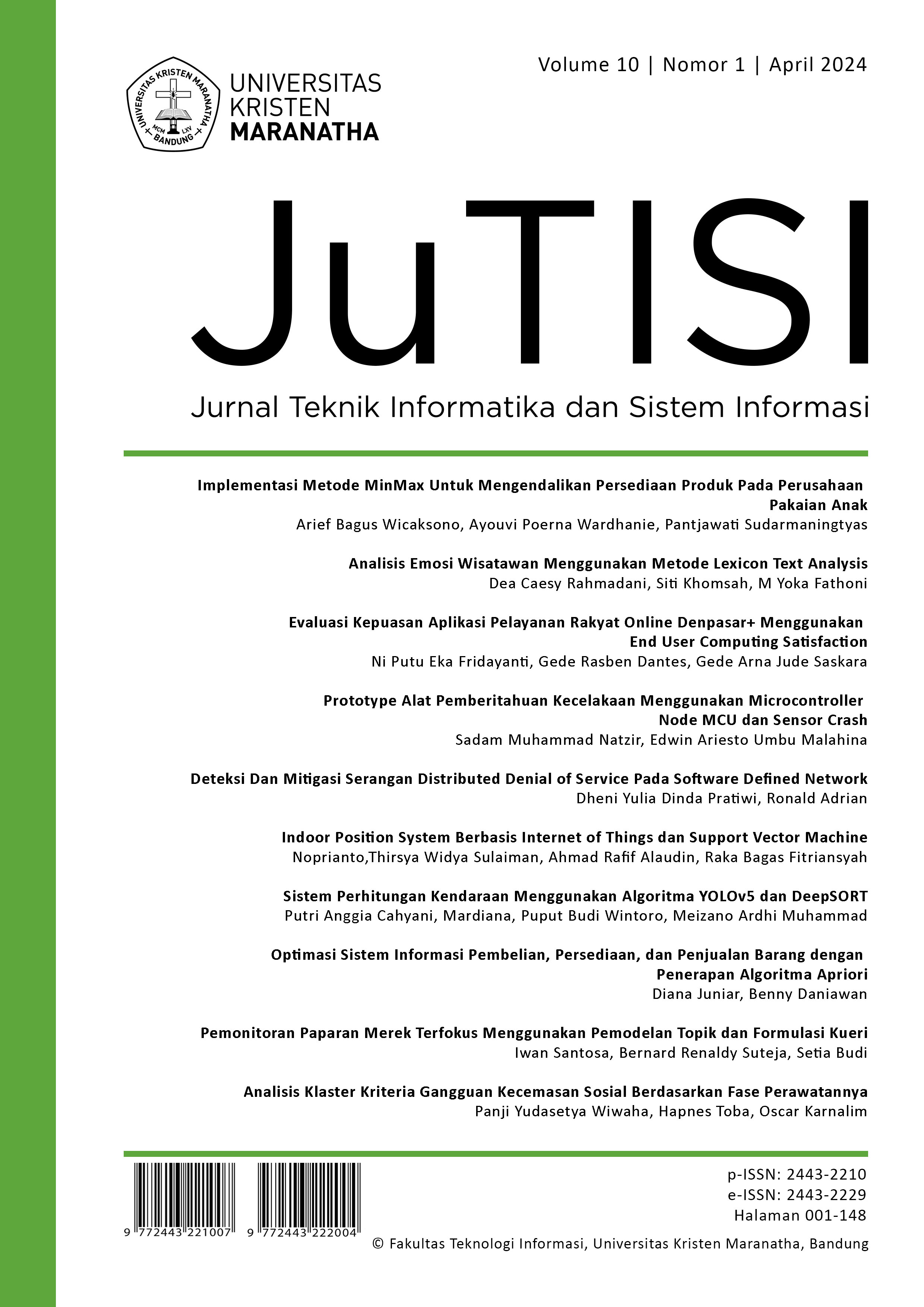Clusters Analysis of Social Anxiety Disorder Criteria Based on Stages of the Treatment
Main Article Content
Abstract
This study aims to cluster the activity dataset of patients who suffer from social anxiety disorder at a Mental Healthcare Company located in the Netherlands and measure the affinity of the cluster to the identified treatment phase based on the similarity of its feature density. The methodology of data clustering is carried out in the following way: 1) data pre-processing against the anonymous patient data, communication data, tracker data of the social anxiety disorder, registration history of the daily entry, notification data, planned event completion data, questionnaires related to the relevancy of the treatment, history of the patient's treatments, and registration history of the thought record, 2) exploratory data analysis to visualize the data point distribution of the activity dataset, perform data standardization, and find the optimal number of clusters, and 3) building a clustering model using the k-Means algorithm. The effectiveness of data clustering is validated by 1) comparing the affinity of clusters to the identified treatment phase and 2) calculating the feature weights to find any features with unique characteristics (dominant) in each treatment phase. The k-Means model successfully grouped the activity dataset into 10 clusters. The clusters are analyzed based on the pattern of cluster affinity and its percentage ratio. Then, 3 clusters are selected because they are close enough to represent each treatment phase in the Mental Healthcare Company. The findings in this study show that the number of days since the patient made a registration, the number of registrations related to social anxiety disorder in the past week, the comparison of negative registrations in the past week compared to one week before, questionnaire scores related to treatment relevancies, and low scores in any questionnaire indicators are distinguished features for each treatment phase. In addition, the urgency of those features matches the therapist's top priority list when treating their clients. Nonetheless, further and comprehensive research must be conducted to understand the impact of the dominant features in each cluster so the classification model for creating a list of recommended patients based on their urgency level of treatment can be built.
Downloads
Download data is not yet available.
Article Details
How to Cite
[1]
P. Y. Wiwaha, H. Toba, and O. Karnalim, “Clusters Analysis of Social Anxiety Disorder Criteria Based on Stages of the Treatment”, JuTISI, vol. 10, no. 1, pp. 132 –, May 2024.
Section
Articles

This work is licensed under a Creative Commons Attribution-NonCommercial 4.0 International License.
This is an open-access article distributed under the terms of the Creative Commons Attribution-NonCommercial 4.0 International License (https://creativecommons.org/licenses/by-nc/4.0/) which permits unrestricted non-commercial used, distribution and reproduction in any medium.
This work is licensed under a Creative Commons Attribution-NonCommercial 4.0 International License.

